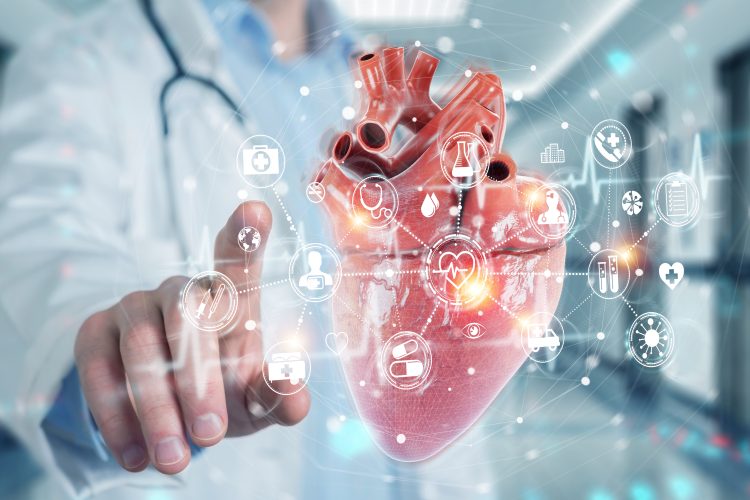The first multi-chamber heart organoids developed
Posted: 20 December 2023 | Ellen Capon (Drug Target Review) | No comments yet
The first multi-chamber cardioids derived from hiPSCs have enabled scientists to investigate heart development and defects.


Researchers, led by Dr Sasha Mendjan at the Institute of Molecular Biotechnology (IMBA) of the Austrian Academy of Sciences, have developed the first multi-chamber heart organoids that reflect the organ’s intricate structures. This promises advanced screening platforms for understanding heart development, drug development and toxicology studies.
The leading cause of death worldwide is cardiovascular disease, yet there are limited therapies for it. Similarly, one in 50 babies born suffer from a congenital heart defect but scientists have little understanding of why these occur. However, the team at IMBA have produced a new physiological organoid model that comprises the major regions of the human heart, enabling scientists to study cardiac disease and development.
In 2021, the Mendjan lab developed the first chamber-like heart organoid formed from human induced pluripotent stem cells (hiPSCs). hiPSCs have many benefits, such as overcoming the ethical and immune-compatibility issues faced due to the use of human embryonic stem cells (hESCs). hiPSCs can be derived from patient-specific somatic cells (eg, skin fibroblasts and hematopoietic cells) and be directly reprogrammed by defined factors to induce pluripotency. These hiPSCs displayed similarities in morphology, proliferation, feeder dependence, surface markers, gene expression, promoter activities, in vitro differentiation potential, and teratoma formation characteristics to hESCs.1
These heart organoids, named cardioids, were self-organising and mimicked the development of the heart’s left ventricular chamber in the very early days of embryogenesis. Dr Mendjan said: “These cardioids were a proof-of-principle and an important step forward…While most adult diseases affect the left ventricle, which pumps oxygenated blood through the body, congenital defects affect mostly other heart regions essential to establish and maintain circulation.”
For the new study, the IMBA scientists furthered this work and derived organoid model of each developing heart structure individually. Dr Mendjan explained: “Then we asked: If we let all these organoids co-develop together, do we get a heart model that co-ordinately beats like the early human heart?”
Regional gene expression
The researchers grew the left and right ventricular and the atrial organoids together. Dr Mendjan remarked: “Indeed, an electrical signal spread from the atrium to the left and then the right ventricular chambers – just like in early foetal heart development in animals…We now observed this fundamental process in a human heart model for the first time, with all its chambers.”
“We now observed this fundamental process in a human heart model for the first time, with all its chambers.”
This model allowed the team to investigate how regional gene expression differences led to specific chamber contraction patterns and the intricate communication between them.
Also, insight was gained into early heart development, especially how the human heart starts beating, which was previously unknown. One of the study’s first authors Alison Deyett, a PhD student in the Mendjan group detailed: “At first, the left ventricular chamber leads the budding right ventricular and atrium chambers at its rhythm. Then, as the atrium develops – two days later – the ventricles follow the atrial lead. This mirrors what is seen in animals before the final leaders, the pacemakers, control the heart rhythm.”
Screening for defects
Multi-chamber cardioids also allowed the scientists to study chamber-specific defects. The team established a screening platform for defects for a proof-of-principle experiment, in which they investigated how teratogens and mutations affect hundreds of heart organoids simultaneously.
Thalidomide, a well-known teratogen in humans, as well as retinoid derivatives, that are used in treatments against leukaemia, psoriasis, and acne, are known to cause severe heart defects in the foetus. Both teratogens induced similar, serious compartment-specific defects in the heart organoids. Similarly, mutations in three cardiac transcription factor genes resulted in chamber-specific defects observed in human development. Dr Mendjan summarised: “Our tests show that multi-chamber cardioids recapitulate embryonic heart development and can uncover disruptive effects on the whole heart with high specificity. We do this using a holistic approach, looking at multiple readouts simultaneously.”
Someday, multi-chamber heart organoids could be used for toxicology studies and to develop novel drugs with heart chamber-specific effects. Drug-induced cardiotoxicity is the leading cause of drug attrition during the development process,2 so these organoids are promising for the future.
Dr Mendjan said: “For example, atrial arrhythmias are widespread, but we currently don’t have good drugs to treat it. One reason is that no models existed comprising all regions of the developing heart working in a coordinated manner – so far.”
Developing heart organoids from patient-derived stem cells may provide insight into developmental defects and its potential treatment and prevention, which the Mendjan lab hope to understand further.
This study was published in Cell.
References
1 Ho Beatrice Xuan, Pek Nicole Min Qian, Soh Boon-Seng. Disease Modeling Using 3D Organoids Derived from Human Induced Pluripotent Stem Cells. International Journal of Molecular Sciences (IJMS) [Internet]. 2018 March 21 [2023 December 7];19(4)936. Available from: https://doi.org/10.3390/ijms19040936
2 Cook D, Brown D, Alexander R, March R, Morgan P, Satterthwaite G, et al. Lessons Learned from the Fate of AstraZeneca’s Drug Pipeline: a Five-Dimensional Framework. Nature Review Drug Discovery. 2014 May 16 [2023 December 7];13(6)419-431. Available from: https://www.nature.com/articles/nrd4309
Related topics
Drug Targets, Organoids
Related conditions
Cardiovascular disease, Congenital heart disease
Related organisations
Institute of Molecular Biotechnology (IMBA)
Related people
Alison Deyett (IMBA), Dr Sasha Mendjan (IMBA)








